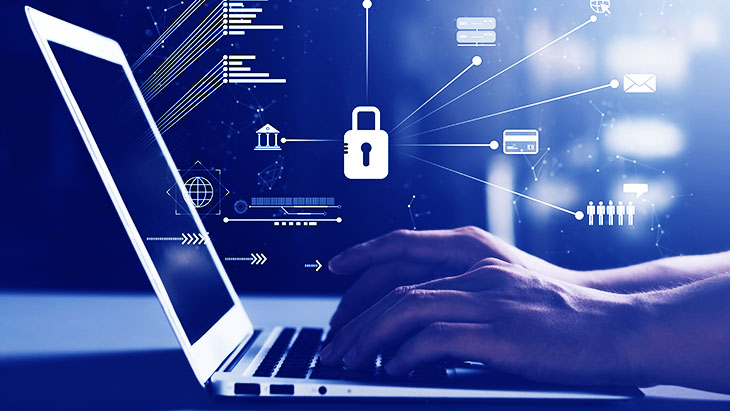
What is Endpoint Security? How to Ensure it?
As digitalization has become an indispensable element of everyday and business life, there has been a huge growth in cyber security problems. The easiness with which hackers can threaten misconfigured IT networks puts organizations at significant disadvantage in terms of access security, as well exposing them to serious consequences in terms of data loss costs.
One of the steps required to minimize cyber security risk factors and create IT infrastructures that can support complete countermeasures against attack vectors is the leverage of endpoint security systems. In short, endpoint security applications, a collection of cyber systems required to protect the security of devices in an IT network, is one of the most effective methods in minimizing data breaches.
What is Endpoint Security?
Endpoint security is a collection of cyber security applications that prevent malicious actors from manipulating the endpoints of end-user and administrator devices in the IT network, such as servers, computers, and mobile devices. This system, which protects network and cloud endpoints from cyberattacks, was built on the zero-trust principle. Endpoint software offers high security against malicious attempts like malware and phishing attacks, promising far more than standard antivirus protection.
In the field of cybersecurity, this system is regarded as the front of the protocols intended to be used to secure the IT network. This is invaluable in terms of early detection of the growing threat level as a result of attack vector complexity and volume increase. If your front line of protection against complex and large-scale attacks is weak, it will be much easier for cyber attackers to reach deeper, putting you in a situation where not only endpoint device security but all IT network critical services will be threatened.
It is essential to pay attention to two important elements for the success of this system, which fights on the front lines of endpoint device protection: zero-trust policy and the least privilege approach. The combined use of these two approaches simply translates to: “Don't trust, test and verify in the first step. Restrict privileges after verification, set different privilege criteria for each user.”
What are Endpoint Devices?
Endpoint devices can be defined as a group of electrical devices that keep an IT system working properly. In general, these devices can be:
- Computers (Desktop and laptop)
- Servers
- Mobile Devices
- Tablets
- Smart Watches
- Printers
- Medical Devices
- ATMs
- Network devices
- POS devices
- Smart Systems
- IoT devices/sensors
- Cloud-based servers (PaaS)
- Cloud-based software (PaaS)
Any connected device, regardless of network scale, is regarded as an endpoint. The number of individual devices connected to a network today significantly exceeds what was standard just a few years ago, as a result of the growth of IoT technology. In fact, it is expected that the total number of devices in any network may reach hundreds of thousands, as a result of the rise in the number of individual devices connected to the network.
Endpoints are a favorite target of cyber attackers since they serve as the attack entry point and network access point for both internal and external threats intending to harm the IT infrastructure. Mobile and remotely managed devices are significant weaknesses for IT infrastructures. The spread of IoT technology, wearable technological products becoming more accessible, and the rise in the number of computers, mobile devices and tablets used for remote access make it necessary to implement advanced cyber security measures to maintain endpoint protection.
Why is Endpoint Security Important?
Endpoint security is the basis of the cybersecurity protocol-building process for a variety of reasons. First of all, data is one of the most valuable assets in both everyday life and the business world today. Individuals and organizations may face irreversible damage as a result of individual or legal data loss and data breaches. Vital factors such as financial losses, bankruptcy, the full cessation of the workflow, loss of customers, and violation of personal data are just some of the possible consequences.
On the other hand, the rise in the number of endpoint devices has increased the significance of human error and internal threat factors. According to the results of recent research, human errors (24%) and internal threats (20%) are the leading threats to endpoints security. At the top of this list is malware attacks (35%), which is a significant external threat element.
To detail the importance of endpoint security, it can be useful to examine the ways in which endpoint attacks harm organizations. The research we just mentioned is also essential in identifying the issues that cybersecurity experts are most worried about when facing endpoint attacks. For example, 48% of cybersecurity professionals surveyed stated that endpoint security breaches reduce end-user productivity. 38% think that the most important problem is the downtime of the system. It is obvious that these issues are critical for the sustainability of organizations' workflows.
Addressing the key issues that expose IT infrastructures to endpoint attacks may be useful when answering the question of why endpoint device security is important. In fact, according to the same report, 38% of the cyber security professionals in the study claim that the absence of 24/7 surveillance is the major cause of these attacks. While 36% complain about the slow response time to the breach, 33% agree that the lack of basic cybersecurity knowledge of the people working in the organization makes it easier for hackers.
Improve Your Endpoint Security with PAM and AAA Solutions
Organizations may experience data breaches, workflow interruptions, and financial losses if endpoint security is not ensured. Privileged Access Management (PAM) and Authorization, Authentication and Accounting (AAA) solutions are very successful in protecting the IT infrastructure from the increasingly complex attacks developed by threat actors, defining privileged access correctly, eliminating endpoint security gaps and preventing shadow IT access. In this context, the Authentication, Authorization and Accounting (AAA) systems provide an advanced cyber security protocol to eliminate cyber risks that may occur through endpoint devices.
Kron’s Marta AAA, has the ability to simultaneously control thousands of devices. Marta AAA effectively defends your IT infrastructure on the front line against various cyber attack vectors by ensuring the application of the zero trust and least privilege principles in addition to the 24/7 principle.
Turkey's leading banks, e.g. İşbank and Kuveyt Türk, selected Marta AAA to safeguard thousands of endpoint devices and reinforce their cyber security structure with high-end features such as privilege management, auditing, and verification. You can contact our team for detailed information on Kron’s Marta AAA and learn about the particular advantages our product will provide your organization.
Other Blogs

There Is No True Cloud Security Without Comprehensive Command and Control












